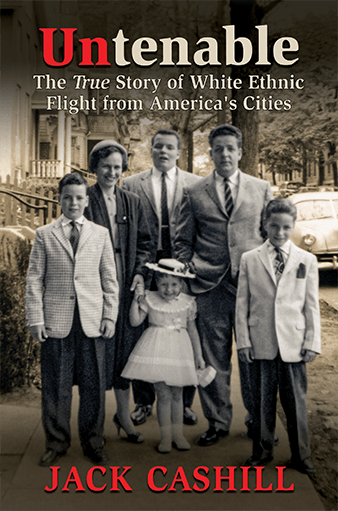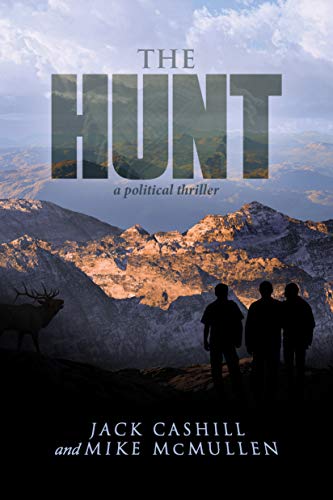STATE OF MINNESOTA
OFFICE OF THE ATTORNEY GENERAL
TO: FILE DATE: November 5, 2020
SUBJECT: State of Minnesota v. Derek Michael Chauvin; Ct. File No. 27-CR-20-12646
State of Minnesota v. Tou Thao; Court File No. 27-CR-20-12949
State v. J Alexander Kueng; Court File No. 27-CR-20-12953
State v. Thomas Kierman Lane; Court File No. 27-CR-20-12951
November 5, 2020 Conference with Dr. Roger Mitchell
Present: Lola Velazquez-Aguilu, Special Assistant Attorney General; Joshua Larson, Assistant
Hennepin County Attorney; Matt Frank, Assistant Attorney General; Erin Eldridge, Assistant
Attorney General; Corey Gordon, Special Assistant Attorney General; Dionne Dodd, Paralegal
Attorney General’s Office
Comments:
Review of Dr. Baker’s Autopsy
· Autopsy pretty complete but noted Baker did not perform a layered posterior neck
dissection
Dunn note: Not so, read this from the autopsy by Baker
- No life-threatening injuries identified
- No facial, oral mucosal, or conjunctival petechiae
- No injuries of anterior muscles of neck or laryngeal structures
- No scalp soft tissue, skull, or brain injuries
- No chest wall soft tissue injuries, rib fractures (other than a single rib fracture from CPR), vertebral column injuries, or visceral injuries
- Incision and subcutaneous dissection of posterior and lateral neck, shoulders, back, flanks, and buttocks negative for occult trauma
Dunn note: More details are provided by Dr. Baker in his discussion on procedures and findings
NECK: Layer by layer dissection of the anterior strap muscles of the neck discloses no areas of contusion or hemorrhage within the musculature. The thyroid cartilage and hyoid bone are intact. The larynx is lined by intact mucosa. The thyroid is symmetric and red-brown, without cystic or nodular change. The tongue is free of bite marks, hemorrhage, or other injuries.
The cervical spinal column is palpably stable and free of hemorrhage.
o Reviewed photos 122 and 123 pointed to a dark spot that could be a hemorrhage
but was hard to tell without a layer posterior neck dissection
Dunn note: This is nothing more than another bruise that showed up on the pictures of the body—again the dissection of the neck, shoulders, back, flanks and buttocks showed no evidence of trauma.
- The lack of a hemorrhage in the deep tissue doesn’t necessarily add value but the presents
of a hemorrhage can be helpful to understand the amount of pressure
Tumor in pelvis
o Possible carcinoid tumor. Baker described the tumor as a possible carcinoid tumor,
but Mitchell does not know whether the tumor was active.
o Carcinoid syndrome can cause
§ Sudden cardiac death and agitation and unstable blood pressure could be
due to carcinoid tumor
o The tumor could put Floyd at further risk of carcinoid syndrome but it depends if it
was secreting serotonin
o Don’t know if tumor was active
o Nothing about the tumor that would absolve the compressions on the neck from its
lethal effect
Dunn note: All this talk about Carcinoid syndrome and Carcinoid tumor is nothing more than talk, since no one can say if it was secreting and if it was secreting and caused cardiac irritability that would just be another cause of death that exonerates Chauvin of the Mitchell claim that Mr. Floyd was asphyxiated.
· George Floyd had an open airway but goes into cardiac arrest while the knee is on his neck.
Mitchell agrees with Baker that the neck compression is a component of the mechanism of
death. 042881
27-CR-20-12949 Filed in District Court
State of Minnesota
5/12/2021 12:32 PM
· Mitchell evaluated the various potential impacts of the compression of the neck and noted
they include possibly causing an arrythmia, he also said it can imped blood flow to the
brain, vaso vagal response
· Mitchell discussed struggle and impact on heart
· The sooner he gets care the higher likelihood he will live
o At no point are they issuing life support care
· You can feel yourself dying, you have to moveo He was in crisis – physical crisis
· The actions of law enforcement were preceded cardiac arrest
· Cardiac event
o Regarding the cause of the cardiac event, Mitchell believed the effect on
circulation was potentially more significant than the impeded ventilation.
However, Mitchell was somewhat unsure because he also believed the neck
compression played a significant part in Floyd’s death
Dunn note: Here Mitchell goes in circles and demonstrates his duplicitous efforts, he admits that the manner of death was more likely cardiac and circulatory, but he then reasserts his opinion that neck compression impeded ventilation.
Moreover, Mitchell ignores the critical information on the brain that shows no evidence of lack of oxygen (hypoxia).
BRAIN (10-12): Sections of hippocampus, cerebellum, cerebral cortex, and midbrain show the expected microscopic architecture, without hypoxic– ischemic, reactive, neoplastic, or inflammatory changes.
- With respect to the term Asphyxia, there are typical indicators of asphyxia that are not
present but also believes the neck compression played a significant part in Floyd’s death.
Neck compression can comprise blood delivery into the brain and can cause hypoxia.
Baker’s lack of use of the term asphyxia is a style issue.
Dunn note: No it isn’t a style issue—it has to do with proper cause of death analysis and conclusions. Baker found no evidence of petechia which is the most common and diagnostic change caused by asphyxiation—the reason is any effort to breath that is obstructed causes an increase in back pressure that produces small hemorrhages in the face and upper body and none were found-Mitchell just discards the lack of petechia when that is pertinent to cause of death analysis.
- Did not die from overdoes
- o Fentanyl is an opioid, which does compromise respiratory drive. But Floyd, when
the officers first encounter him, is not having trouble breathing.
Mitchell does not believe that the Fentanyl or any of the drugs in his system are
playing a part in Floyd’s death
o In order for these drugs to cause death, the user would be in a stupor, brainstem no
longer functioning properly and dying from the fact that brainstem is suggesting
you have enough oxygen and you are holding on to carbon dioxide
Dunn note: Yes indeed this was not a Fentanyl overdose—which causes lethargy and stupor and respiratory failure/arrest. However Mitchell ignores the cardiac arrhythmia risks created by agitation and methamphetamine.
- Lungs = normal
· Heart = not normal
o High blood pressure
o Dilated heart
o Hypertension
o Cardiovascular disease puts Floyd at risk for fatal arrhythmia
Cardiac arrhythmia was a risk because of Mr. Floyd’s bad heart disease
Dunn note: I found this section most enlightening—Mitchell is correct as was Baker and normal lungs eliminates opiate pulmonary edema as a consideration. In fact Mitchell agrees that cardiac arrhythmia is the most likely cause of Mr. Floyd’s sudden death. But he insists Baker should blame the death on asphyxiation and neck pressure when there was no evidence of trauma of the airway/neck shoulders, trunk. My conclusion is that Mitchell read what he wanted to read and ignored the evidence that was right in front of him—he had a racially motivated tunnel vision-police misconduct killed Mr. Floyd. He ignored the evidence that showed the most likely cause was a bad heart and the resistance and agitated intoxication combined with methamphetamine on board that caused fatal cardiac arrhythmia, just like what forensic pathologists see all the time cardiac arrest during exertion.
-
Dr. Andrew Baker
o Knows professionally through NAME and worked together on the Castille case
o Found Dr. Baker’s preliminary findings odd
o When the preliminary result came out via the criminal complaint, Mitchell found
the statement was bizarre. Mitchell was reading and said this is not right. So
Mitchell called Baker and said first of all Baker should fire his public information
officer. Then Mitchell asked what happened, because Mitchell didn’t think it
sounded like Baker’s words. Baker said that he didn’t think the neck compression
played a part and that he didn’t find petechiae. Mitchell said but you know you can
not have petechiae and still have asphyxia and can still have neck compression.
Baker then asked are you going to come and do a second exam. Baker said well
they are looking for someone to come and I hope it is you. Mitchell said, I am just
calling to lend you support and if you need support, let me know. 042882
o Mitchell thought about it more that weekend, and was going to release an op-ed. A
friend put out the op-ed on Facebook. Mitchell will send the op-ed to us. Mitchell
was expecting to send the op-ed to the Washington Post on Monday afternoon so
Mitchell called Baker first to let him know that he was going to be critical of
Baker’s findings. In this conversation, Mitchell said, you don’t want to be the
medical examiner who tells everyone they didn’t see what they saw. You don’t
want to be the smartest person in the room and be wrong. Said there was a way to
articulate the cause and manner of death that ensures you are telling the truth about
what you are observing on the body and via all of the investigation. Mitchell said
neck compression has to be in the diagnosis. Baker asked whether he could give
Mitchell’s name to the AG because he knew Mitchell would be fair in his review
of the information.
o Talked to Dr. Baker before his diagnosis were final
Dunn note: This section shows that Baker was being obsequious—Mitchell was essentially trying to bully him into a police murder cause of death and he was, like most white professionals INVOLVED IN RACIALLY CHARGED MATTERS-SCARED TO DEATH FOR HIMSELF AND HIS FAMILY. Even though Baker did a fine autopsy and would have come to the right conclusions that there was no evidence of homicide, by the time some of these things played out the riots were everywhere with the epicenter for Baker his home.
Like most people confronted by a thug like Mitchell Baker added some nonsense words about cause of death, and he even suggested Mitchell review his work and maybe be chosen to do the second autopsy because he knew Mitchell would be fair? That’s called cowering in fear.
27-CR-20-12949 Filed in District Court
State of Minnesota
5/12/2021 12:32 PM



